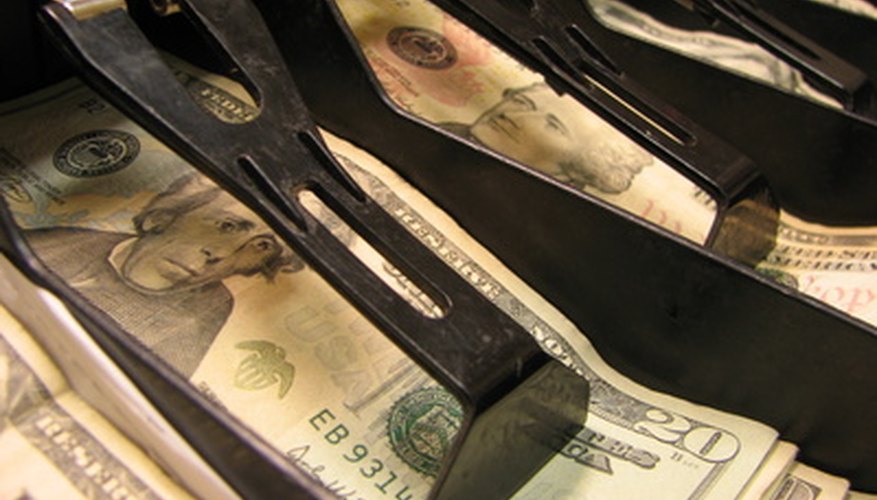A supermarket cashier is someone with whom we are all familiar. A trip to the grocery store is a regular occurrence, but before you can take the food home, a short visit with this supermarket employee is required. Getting a job as a supermarket cashier does not require schooling or any type of certification. It is a job in which on-the-job training will prepare you sufficiently for the position. However, the cashier does have several duties and responsibilities during an average shift.
Customer Service
The first duty of the supermarket cashier is to be friendly and provide excellent customer service. This service extends beyond just the checkout line. While a grocery store often has a customer service desk, many patrons will choose to locate a cashier to get help with their shopping experience. This often includes helping customers find specific items or answering questions about current sales or promotions. It may be as simple as directing the customer to the rest rooms. The cashier must maintain a friendly demeanour while providing whatever help the customer might need to ensure they have a positive experience in the store.
- The first duty of the supermarket cashier is to be friendly and provide excellent customer service.
- It may be as simple as directing the customer to the rest rooms.
Weighing and Coding
According to StateUniversity.com, part of the job of the supermarket cashier is to weigh produce and other items that may be sold by weight instead of a fixed price. Fruits and vegetables are the most common items to use this type of pricing. The cashier must place the items on a scale to get an accurate weight and must enter the code corresponding to the product so that the register knows the proper amount to charge. Memorising the various produce codes will help the cashier work more efficiently. Otherwise, coding must be done by looking up each item on a chart that is typically kept by the register.
- According to StateUniversity.com, part of the job of the supermarket cashier is to weigh produce and other items that may be sold by weight instead of a fixed price.
- Otherwise, coding must be done by looking up each item on a chart that is typically kept by the register.
Register Functions
Supermarket cashiers scan or enter the price of all items at the register in order to determine the amount of money the customer owes. The cashier must be comfortable and confident in all the necessary functions of the register and should be efficient in taking payment and counting back change or processing credit or debit cards. The cashier is also responsible for maintaining a bank of money in the register drawer that must be verified at the beginning and end of the shift by a thorough count.
- Supermarket cashiers scan or enter the price of all items at the register in order to determine the amount of money the customer owes.
- The cashier is also responsible for maintaining a bank of money in the register drawer that must be verified at the beginning and end of the shift by a thorough count.
The cashier must also be familiar with store policy regarding the use of coupons, and be aware of how to enter those into the system in order to adjust the price correctly and file them so that the store can receive the manufacturer credit.
Some customers will use food stamps, which typically come in the form of a debit card. While the register system may automatically determine what purchases are eligible under food stamp laws, other manual systems may require the cashier to know what can be bought with food stamps and what cannot.
Bagging
Some grocery stores hire employees that bag groceries for the cashier, but in other stores or during off-peak times there may be no bagger available. In this event, the cashier also bags the groceries after completing the sale. Bagging requires common sense placement of products in specific bags to prevent breakage or other damage.
Price Checks
Sometimes the grocer does not properly label the items or the bar code scanner may refuse to read a label to determine the price. At other times, a customer may claim that there was a price marked on the shelf that differs from what the register displays. In these instances, the cashier must be able to use the in-store communications to run a price check. This may involve contacting a stock person or a bagger to go into the aisle to verify the correct price of a product.
- Sometimes the grocer does not properly label the items or the bar code scanner may refuse to read a label to determine the price.
- At other times, a customer may claim that there was a price marked on the shelf that differs from what the register displays.
